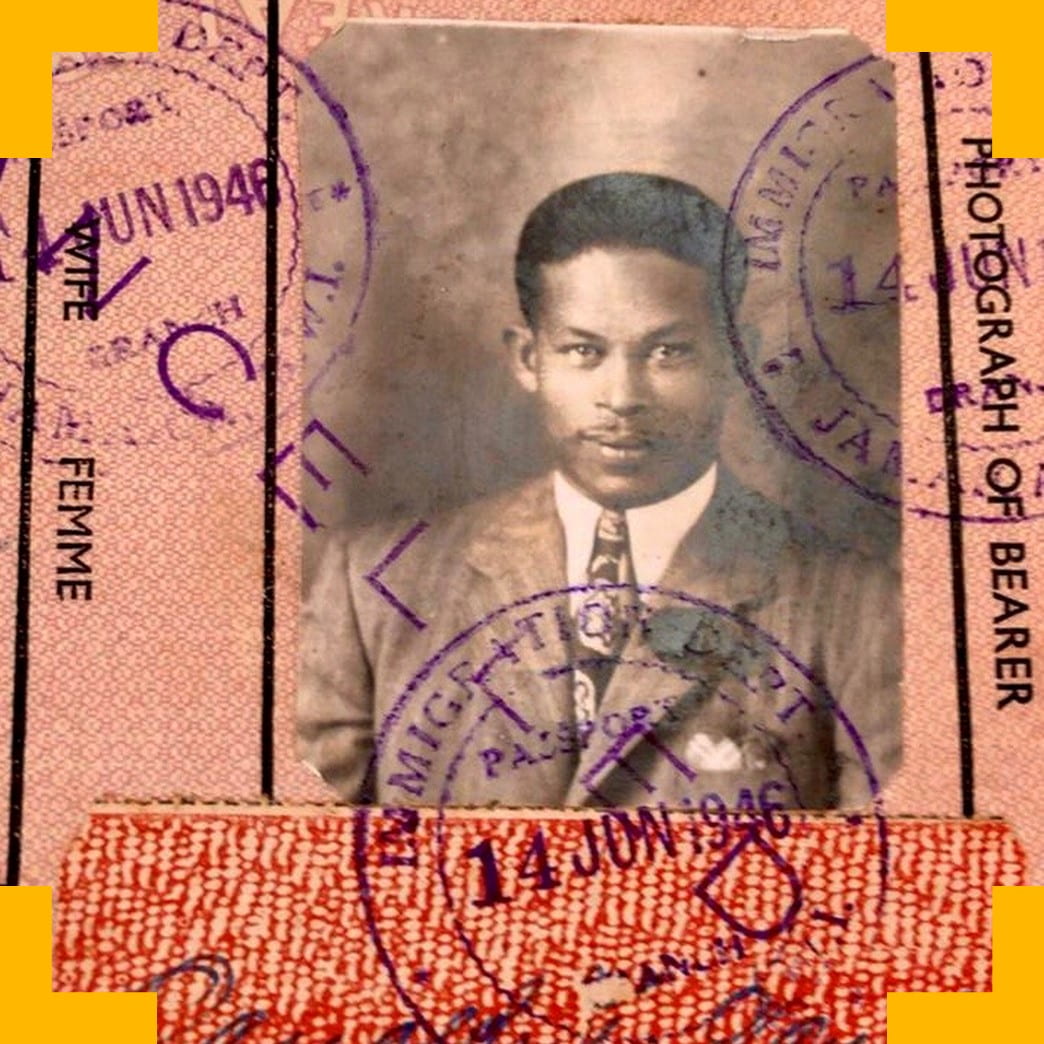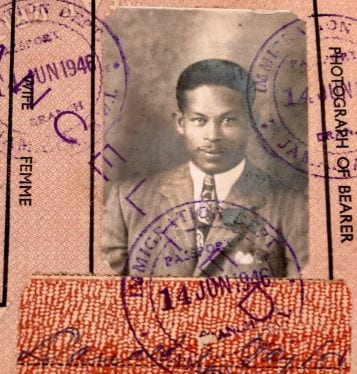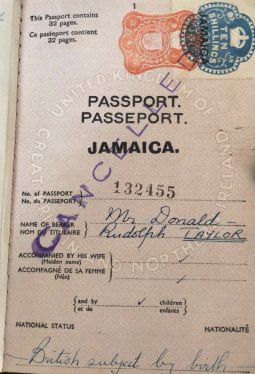Endless Pressure: Sociologists in Conversation
Julia O’Connell Davidson (SPAIS, University of Bristol), Jacqueline Sanchez Taylor (Department of Sociology, University of Leicester). Endless Pressure 50 Years on: Revisiting Ken Pryce’s Study of West Indian Life-Styles in Bristol

Julia: Do you have a copy of Ken Pryce’s Endless Pressure?
Jackie: Yes, a very worn copy. The front cover has a photo of three young black men dressed in 1970s clothing, trying to look cool. The skinny middle ‘yout’ stares straight at the camera wearing pilot Ray Ban reflective sun glasses, flares and a white shirt opened to reveal some of his bare chest. Beside him is a Rasta haired young man with a beard wearing jeans that have been ironed, probably by his mum, leaving a sharp crease down the middle and a black bomber jacket over a navy jumper and red shirt. The last dude looks about fifteen. He peers over the shoulder of the middle guy, smiling innocently at the camera with an open face and flat cap that was all the rage back then. They are pictured in the open doorway of what appears to be a youth club, with walls painted yellow and green, run down with age and poverty.
Julia: When did you first read it?
Jackie: I read the book in the 1980s before I became a sociologist. It was probably one of the only books I had seen with a picture of black people on the cover, and the fact that it focused on ‘West Indian culture’ helped me to think that my cultural and political experience might be something worth studying. Though actually, as I‘m from London, I remember thinking Bristol was another country and being fascinated by the world he described. Some of it made me feel uncomfortable though, and as a black women, I also remember feeling written out of it. But I wasn’t a sociologist then, so I couldn’t really analyse what it was that made me feel uncomfortable.
Julia: I read it in the 1980s too, when I was an undergraduate sociology student. It was recommended reading for a module called The Sociology of Deviance. Now you come to mention it, it must also have been one of the first books I ever came across with an image of black people on the cover, but I don’t remember noticing or thinking about that. As a young white person, who’d grown up and gone to school in a very white area, and only recently started to socialise with any black or Asian people, I was probably completely unaware of the almost exclusive whiteness of the books I read, including the books I was studying as a sociology undergraduate.
Jackie: And then when you were given a book about black people’s lives, it was for a module on deviance!
Julia: Yes! So I read it alongside all those famous old white American sociologists’ ethnographic studies of ‘Outsider’ groups, like William Whyte’s 1943 study in Boston, Street-Corner Society: The Social Structure of an Italian Slum, and Howard Becker’s 1960s research on jazz musicians and marijuana users, and Ned Polsky’s 1967 book, Hustlers, Beats and Others. Of course, Ken Pryce was making an intervention into debates on ‘race relations’ and migration, but the fact his book could be slotted into a module like that reminds me that in Britain in the 1970s, sociological approaches to race and migration overlapped with the study of ‘deviance’. Again, whiteness was the taken-for-granted norm, and any group that deviated from it was a sort of social ‘problem’ to be put under the microscope, studied and ‘explained’. And also, Pryce’s book was based on the same sort of field study methods that sociologists of deviance used, and created a typology (saints, mainliners, hustlers, teeny boppers) which defined groups on the basis of how much they conformed to or deviated from ‘mainstream’ – i.e., white – norms and values.

Jackie: That’s probably partly what made me uncomfortable about the book, even though I could relate to much of his description of Jamaicans in Bristol. Pryce described the experience of young men in education and after school when they tried to find jobs that were worthwhile, and he tracks older members of the community through different church and work organisations. His description of children’s migration from Jamaica to the UK resonated with my family experience. In 1958, my older brother migrated to the UK aged nine to live with my dad. By that time, my dad had established a new relationship with my mother, a white Spanish woman, also a migrant to the UK. They went on to have three children – I’m the eldest. Like a lot of Pryce’s interviewees, for my brother, migration wasn’t only about leaving one country for another, it meant change to every aspect of his life. So my brother’s arrival and his experience of school mirrored many of the interviewees in the book. I could also recognise the description of ‘Mainliners’ who become the mascots and mouthpieces of big institutions and the establishment, having known plenty of people like that growing up in London’s East End. But I also find parts of his description of people’s lives and strategies for coping with the endless pressure of racism quite problematic.
Julia: Yes, I was surprised by some of the language when I re-read it. Like here, where he’s describing going to a blues and talking about going into a room where the atmosphere changes:
“There is something menacing, almost sinister about the faces here. The faces are serious, even sullen… This is the smoking room of the professional hustlers and their prostitutes. Birds of a feather stick together. Hustlers always stick together and smoke together at a blues dance… The faces are motionless and sombre to the point of appearing evil and sinister. These men represent the hardcore of the criminal underworld of Shanty Town” (p101).
“Sullen” and “menacing” and “evil”? This reminds me of the language white people used to stereotype and caricature enslaved people in the nineteenth century. It’s hard to imagine any sociologist, white or black, writing a passage like that today.
Jackie: And the same with gender. He says in the book’s methodological appendix that as a man, he didn’t have the same research access to women as to men, but this doesn’t really explain the way represents women in the book. They basically only seem to appear as either mothers or “prostitutes”. And even the mothers that feature most prominently are “problems”, like the story of “the frantic, hapless, Miss Williams, a loser in her fight to save her son” (p119).
Julia: Part two of the book does focus on ‘The stable, law-abiding orientation’, and Pryce explicitly states that “Together saints and proletarian respectables make up the majority group of ordinary, steady, aspiring, law-abiding West Indians” (p185). But I still feel that any white reader who came to the book with preconceived racist stereotypes about black criminality and hypersexuality and family dysfunction would hone in on part one of the book – which is way longer than part two – and I don’t think they’d find it presented any great challenge to their racist preconceptions.
Jackie: Especially not their racist preconceptions about sex. There isn’t an index in my copy of the book, but if there was one, the words “prostitution” and “prostitute” would have a lot of entries! Mostly, he’s talking about white women in this context, and so interracial relationships also appear in the book largely as a form of ‘deviance’. There’s nothing in the book that speaks to relationships like my own parents’. I suppose my dad would have fallen into Pryce’s “Mainliner” category. He wasn’t religious, so not a “Saint”, but definitely he was very respectable. He was married to my mum for over thirty years and they both worked really hard to try to achieve a home and financial security for their family. People often forget that right through the twentieth century, there was hostility towards interracial couples in Britain as well as in the States, and that so-called “miscegenation” was seen as a problem here too. Or at least, they did until they saw the racist responses to Harry and Megan recently! My parents faced a lot of racism as an interracial couple in the 1960s and 70s, and there were couples like them in Bristol at the time of Pryce’s research, but he doesn’t really focus in on their experience. In fact, when he mentions hostility towards mixed black and white couples, he’s talking about his black research subjects’ hostility towards them, not white racism. So re-reading the book, I still feel uncomfortable and conflicted about it!

Julia: I definitely read it very differently today than I did as an undergraduate. In fact, it makes me realise how much debates on race and racism have changed over the past four decades. It’s another reason to mourn the fact Ken Pryce’s died at such a young age, so he didn’t get a chance to engage with these developments. I suppose that’s also why even though I recoil at some parts of the book, it seems harsh to judge it by contemporary standards when perhaps Pryce’s work actually contributed to the shifts that have taken place.
Jackie: Yes, you can place Endless Pressure alongside the work of people like Stuart Hall and Paul Gilroy and many more who were also at that time writing about the policing of black communities and the experience of young black people in Britain. A lot of 1970s and 80s studies of black youth were also later criticised for focusing on ‘deviance’ – unemployment, crime, family conflict, and what Ken Pryce called being “tribeless” and “without solid roots” (p119). But then on the other hand, that kind of research was the bridge into Black British cultural studies which opened the door to much more nuanced and complicated understandings of race and identity, and allowed (some) sociologists to break with old-school, narrow understandings of racism and start to identify and challenge the way their own discipline reproduced pathologizing representations of black people and communities.
Julia: And that has helped paved the way for the current interest in decolonising curricula. Though it’s interesting too that Pryce was very much concerned with the legacy of colonialism. Endless Pressure starts with the history of slavery and British colonial rule in the West Indies, and very clearly sets out how poverty, economic underdevelopment, political instability and violence in Jamaica at the time he was writing was a product of that history. And as the introduction states, the book: “is an attempt to depict the life-styles of West Indians in Bristol, both within the context of the neo-colonial relations characterizing the post-war West Indian migration to Britain and in terms of the responses of West Indian workers to ‘slave labour’ and ‘shit-work’ in the contemporary British economy.” (pxi)
Jackie: Yes, and he says the book shows how Jamaicans who migrated to the UK to make a new and better life discovered in the end that they had “merely exchanged one colonial context for another” (p268). He was definitely not following the “race relations” type approach that in the 1970s would have looked at migrants’ “deviant” lifestyles and explained them as a failure to properly “assimilate”, he was adding in a Marxist concern with class, race and colonialism to show that the problem for West Indian migrants was being treated as a supply of cheap labour and subjected to racism and discrimination. But if he was doing the research again today, and was able to draw on the contemporary literature on decolonial theory and intersectionality, I think the book would look very different. As it stands, it just sounds so Othering. It reads as though it’s written for a white audience, and in the disembodied voice of academic authority, basically the voice of the old white colonial ethnographer who could somehow objectively describe the world of the “natives” he studied.
Julia: Presumably that’s how his white supervisors and fellow academics at the time expected him to write?
Jackie: Yes, probably. I would love to be able to ask him about his experience as a black PhD student and researcher in Britain in the 1970s, and about the racism he experienced. Given how bad racism still is in British universities, I imagine that he was under its “endless pressure” too. I suppose the fact that he reproduced the style of mainstream, white sociology made him a “Mainliner”, to use his typology. But that’s what he would have had to be to succeed in academia. I don’t know how much this has changed. Even though there are more black people in academic posts in universities today, there are very few in senior positions. And to succeed in academia, being brilliant isn’t enough. You need the support of more senior figures – first your supervisors, and then professors and heads of department to secure jobs and to mentor you. So black academics are still dependent on the patronage of white academics to get by, and there are lots of black and Asian British academics who still feel that they are over-represented amongst those performing the ‘slave labour’ and ‘shit-work’ within universities.
Find out more about Endless Pressure 50 Years On: Revisiting Ken Pryce’s Study of West Indian Life-Styles in Bristol

